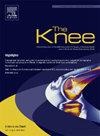青少年团队运动员肢体内和肢体间力量不对称与短跑运动学和力-速度曲线之间的关系。
IF 2
4区 医学
Q3 ORTHOPEDICS
引用次数: 0
摘要
背景:最大力量在提高各种动态运动的成绩中发挥着关键作用,尤其是在短跑生物力学中。然而,腘绳肌和股四头肌等主要肌群之间的肌力不对称可能会阻碍短跑表现并增加受伤风险。本研究探讨了肢体内和肢体间力量不对称与青少年运动员短跑运动学和力量-力量-速度曲线的关系:来自足球、排球和手球的 74 名青少年运动员完成了两次测试,每次测试间隔 48 小时。评估内容包括人体测量、短跑测试以及60°.s-1和180°.s-1等速测力计力量评估。使用 Optojump Next 系统分析短跑运动学,并通过 Samozino 方法确定力-速度曲线变量。不对称分析采用标准百分比差异方程:结果:在力量不对称和短跑参数之间发现了弱到中等程度的相关性(r = -0.46 到 0.45),表明不对称对短跑运动学和动力学的影响有限。虽然大多数参与者的不对称水平低于 15%的阈值,被认为具有重要的功能意义,但异常值的不对称值高达 42%,表明存在相当大的变异性:结论:下肢力量不对称会适度影响年轻团队运动员的短跑运动学和力量-速度曲线,这对传统观点提出了挑战。我们需要进一步研究力量不对称与短跑表现之间的机制,以便为有针对性的训练干预提供信息,从而优化青少年运动员的表现并降低受伤风险。本文章由计算机程序翻译,如有差异,请以英文原文为准。
Association between intra and inter-limb strength asymmetry with sprint kinematics and force-velocity profile in youth team athletes
Background
Maximal force plays a pivotal role in enhancing performance across various dynamic sports, particularly in sprinting biomechanics. However, muscle strength asymmetry among major muscle groups like the hamstrings and quadriceps may hinder sprint performance and raise injury risks. This study examines how intra- and inter-limb strength asymmetry relates to sprint kinematics and the power-force–velocity profile in youth athletes.
Methods
Seventy-four youth athletes from football, volleyball, and handball completed two testing sessions, 48 h apart. Assessments included anthropometric measurements, sprint tests, and isokinetic dynamometer strength evaluations at 60°.s−1 and 180°.s−1. Sprint kinematics were analyzed using the Optojump Next system, and force–velocity profile variables were determined via Samozino’s method. Asymmetry analysis used a standard percentage difference equation.
Results
Weak to moderate correlations (r = −0.46 to 0.45) were found between strength asymmetry and sprint parameters, suggesting limited impact of asymmetry on sprint kinematics and kinetics. Although most participants showed asymmetry levels below the 15% threshold deemed functionally significant, outliers had asymmetry values up to 42%, indicating considerable variability.
Conclusions
Lower extremity strength asymmetry moderately affects sprint kinematics and force–velocity profiles in young team athletes, challenging traditional views. Further research is needed to explore the mechanisms between strength asymmetry and sprint performance, aiming to inform targeted training interventions that optimize performance and reduce injury risks in youth athletes.
求助全文
通过发布文献求助,成功后即可免费获取论文全文。
去求助
来源期刊

Knee
医学-外科
CiteScore
3.80
自引率
5.30%
发文量
171
审稿时长
6 months
期刊介绍:
The Knee is an international journal publishing studies on the clinical treatment and fundamental biomechanical characteristics of this joint. The aim of the journal is to provide a vehicle relevant to surgeons, biomedical engineers, imaging specialists, materials scientists, rehabilitation personnel and all those with an interest in the knee.
The topics covered include, but are not limited to:
• Anatomy, physiology, morphology and biochemistry;
• Biomechanical studies;
• Advances in the development of prosthetic, orthotic and augmentation devices;
• Imaging and diagnostic techniques;
• Pathology;
• Trauma;
• Surgery;
• Rehabilitation.
 求助内容:
求助内容: 应助结果提醒方式:
应助结果提醒方式:


